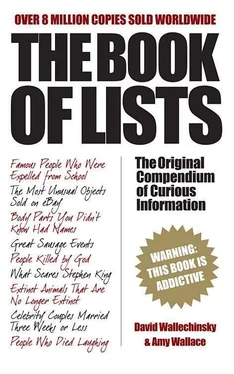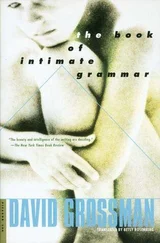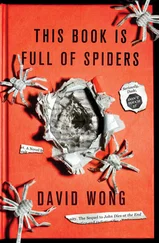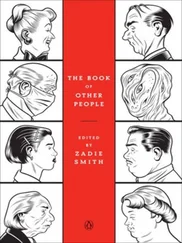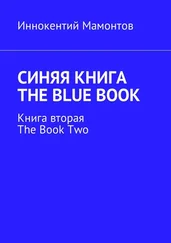IMPAIRED JUDGMENT (2002 pairs figure skating)
The sport of figure skating has a long history of judging controversies; however the problem reached a head at the Salt Lake City Olympics. Russian skaters had won ten straight Olympic championships in the pairs event. In 2002, Russians Elena Berezhnaya and Anton Sikharulidze were in first place after the short program, with Jamie Sale and David Pelletier of Canada in second. In the free skate, the Russians made a series of technical errors, while the Canadians skated a clean programme. Nonetheless, the judges voted 5–4 to award the gold medals to Berezhnaya and Sikharulidze. The ensuing outrage expressed by the North American media was so great and so prolonged that the International Olympic Committee pressured the International Skating Union into giving a second set of gold medals to Sale and Pelletier. Subsequent investigations revealed behind-the-scenes deals among judges and even possible involvement of organised crime figures. Lost in the uproar was the possibility that the five judges who voted for the Russian pair simply preferred their traditional balletic style, while considering the exuberance of Sale and Pelletier’s performance to be glitzy and too ‘Hollywood’.
ROCK, PAPER, SCISSORS
The venerable sport of rock, paper, scissors (rock smashes scissors; scissors cuts paper; paper wraps rock) finally found its place on the world calendar in 2002 with the inauguration of the first international championships. Held in Toronto, Canada the 2003 competition was won by local favourite Rob Krueger. For information see www.rpschamps.com.
ROBOT SOCCER
RoboCup 2004, held in Lisbon, Portugal, brought together dozens of robot soccer teams from nations as far afield as Iran, Latvia, Chile, China, Australia and the United States, although most of the leading entries were from Germany and Japan. Robot teams compete in four senior divisions, including 4-Legged Robot League and Humanoid League, the only category in which the robots are guided by humans with hand-held controllers. For information, see www.robocup2004.pt.
ONE-HOLE GOLF TOURNAMENT
The annual Elfego Baca golf tournament (named after a colourful New Mexico lawyer and politician) consists of only one hole — but it’s not your typical hole. The tee is placed on top of Socorro Peak, 7,243 feet above sea level. The hole, which is actually a patch of dirt 60 feet in diameter, is two and a half miles away and 2,550 feet below. The course record, 11, is held by Mike Stanley, who has won the tournament 10 times. The first competition was held in 1969. The 2004 competition was won by Johnny Gonzales with 17 shots. For information, write to Elfego Baca Shoot, John R. Howard and Associates, PO Box 30850, Albuquerque, New Mexico 87108–0850, USA.
LAWN-MOWER RACING
The first national lawn-mower racing championship was held in Grayslake, Illinois, during the Labour Day weekend of 1992. The event was surprisingly controversial. The outdoor Power Equipment Institute, a trade association that represents lawn-mower manufacturers, formally opposed the concept of lawn-mower racing because it does not promote ‘the effective and safe use of outdoor power equipment’. Nonetheless, 3,000 spectators had a good time and the proceeds from admissions went to fight Lou Gehrig’s disease. Since then, lawnmower racing has spread throughout North America. For information, write to the US Lawn-Mower Racing Association, 1812 Glenview Rd., Glenview, IL 60025, USA or see www.letsmow.com.
STONE THROW
The Unspunnen Festival celebrating Swiss costume and folklore has been held irregularly since 1805. One of the highlights of the festival is the throwing of the 185-pound (83.5 kilograms) Unspunnen Stone. The record throw is 3.61 metres (11 ft 2 in.) set by Josef Küttel of Vitznau at the 1981 festival. The next festival will be held in September 2005. For information, write to the Tourist Office Bernese Oberland, 3800 Interlaken, Switzerland or see www.unspunnenfest.ch.
NONVIOLENT HUNTING TOURNAMENT
Archers who don’t like to kill animals can enter the National Field Archery Association’s 3-D tournaments held throughout the United States. Competitors take aim at life-size dummies of deer, bears, mountain lions, wild pigs and wild turkeys. There are numerous divisions for men and women of all ages, using equipment ranging from traditional , with no sights, stabilisers, wheels and cams, to compound bow , which allows sight, stabilisers, wheels and cams. For information write to: National Field Archery Association, 31407 Outer I-10, Redlands, CA 92373, USA or see www.fieldarchery.org.
5 FAMOUS PEOPLE WHO INVENTED GAMES
1. LEWIS CARROLL (1832–98), British author and mathematician
A wizard at conventional games such as chess and billiards, the creator of Alice in Wonderland was a genius at inventing mazes, ciphers, riddles, magic tricks — even a paper pistol that popped when waved through the air. Wherever he travelled, especially to seaside resorts, Carroll always carried a black bag filled with delectable toys and games to enchant prospective female child-friends. His Game of Logic , published as a book in 1886, was an attempt to teach a dry, academic subject in a humorous, innovative way. Using ‘propositions’, ‘syllogisms’ and ‘fallacies’, the game, though fairly complicated, was lively and filled with clever statements on everything from dragons and soldiers to pigs, caterpillars and hard-boiled eggs. One of Carroll’s syllogisms:
Some new Cakes are unwholesome;
No nice Cakes are unwholesome.
Therefore, some new Cakes are not not-nice.
2. MARK TWAIN (1835–1910), US author
‘Mark Twain’s Memory-Builder, a Game for Acquiring and Retaining All Sorts of Facts and Dates’ was a particularly appropriate game for Twain, who was known for his absentmindedness. Played on a pegboard divided into 100 rectangles (representing the 100 years in a century), the history game tested players’ abilities to remember dates of worldwide ‘accessions’ (to thrones and presidencies), ‘battles’ and ‘minor events’ (such as important inventions). A player called out a date and event (such as 1815, Waterloo), then stuck a pin (each player had a set of coloured pins) in the corresponding year and category (‘battle’). Penalties were imposed when a player gave an incorrect date and a point system determined the winner. Twain sold the game in 1891 and later revised it, hoping to organise nationwide clubs to compete for prizes. But the overhauled memory-builder proved too complex and was a commercial failure.
3. ROBERT LOUIS STEVENSON (1850–94), Scottish novelist and essayist
The author of Treasure Island invented a German-style war game in the winter of 1881–82 while residing in Davos, Switzerland, with his wife, Fanny, and 13-year-old stepson Lloyd. After clearing ample floor space in the lower storey of their chalet, Stevenson, armed with Operations of War (a military strategy book), methodically set up a ‘theatre of war’ and carefully positioned opposing armies of lead soldiers. To shoot down the enemy, players used popguns — ingeniously loaded with ‘ems’ from Lloyd’s small printing press. Face-down cards provided the element of luck in the game, serving up valuable military secrets. The war game never had an official name, nor was it marketed, but Stevenson did write a long magazine article about it which was published in 1898. One reader, H. G. Wells, was so captivated by the game that he created his own — called Little Wars (see below).
Читать дальше
